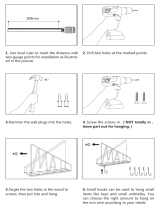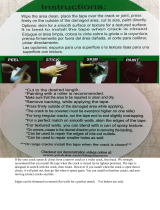
CONTENTS
SECTION 1: INTRODUCTION AND GENERAL DESCRIPTION ........1
1-1. SCOPE .................................1
1-2. DESCRIPTION .............................1
1-2.1. Standard Components .....................1
1-2.2. Optional Components ......................2
SECTION 2: PREPARATION FOR USE.....................2
2-1. SERVICE UPON RECEIPT.......................2
2-1.1. Unpacking ............................2
2-1.2. Inspecting Unpacked Equipment ................2
2-2. HELMET SIZING ............................3
2-3. ANVIS QUICK-DISCONNECT MOUNT INSTALLATION
(For Optional ANVIS Quick-Disconnect Dual Visor Assembly). . . 5
2-4. INSTALLING V-1 MOUNT
ON OPTIONAL ANVIS DUAL VISOR ASSEMBLY ..........7
2-5. HELMET FITTING...........................11
2-6. TPL CUSTOM FITTING ........................14
SECTION 3: OPERATION ...........................18
3-1. DONNING/REMOVING HELMET ...................18
3-1.1. Donning Helmet ........................18
3-1.2. Removing Helmet .......................18
3-2. OPERATION OF COMPONENTS ..................19
3-2.1. Fastening and Adjusting Chinstrap ..............19
3-2.2. Adjusting Nape Strap .....................20
3-2.3. Raising and Lowering Visors..................20
3-2.4. Operating ANVIS Goggles ...................20
3-2.5. Operating Communications System ..............20
SECTION 4: MAINTENANCE .........................21
4-1. PREVENTIVE MAINTENANCE ....................21
4-1.1. Pre-flight Inspection ......................21
4-1.2. Post-flight Inspection ......................21
4-1.3. Cleaning ............................21
4-2. TROUBLESHOOTING ........................25
4-3. COMPONENT REPLACEMENT ...................29
4-3.1. Energy-Absorbing Liner ....................29
4-3.2. TPL Cloth Cover ........................31
4-3.3 Retention Assembly ......................32
4-3.4. Earcup Assembly .......................34
4-3.5. Microphone Boom .......................36
4-3.6. Communications Assembly ..................37
4-3.7. Dual Visor Assembly ......................42
SECTION 5: PARTS LIST ...........................44


































